Bay Area SCAN weekly update 12/21/22
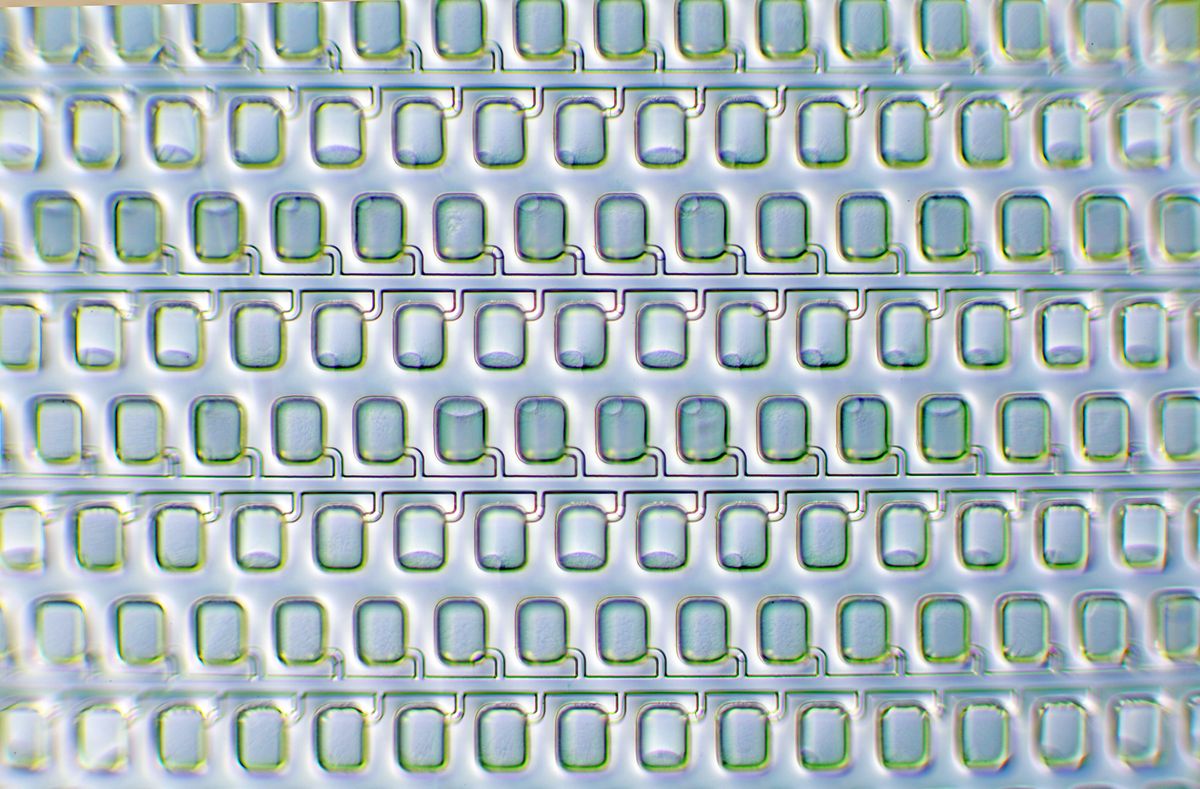
All samples picked up by the couriers as of 12/19/22 have been processed and their data are on the site: wbe.stanford.edu. The data from 12/20/22 will be posted later today.
Note that the website changed a bit in that now all non-SARS-CoV-2 pathogens can be found on one page with more control over the visualizations. Check it out here.
COVID-19
The concentrations of SARS-CoV-2 RNA we are seeing in wastewater have fallen over the last week. They were at levels similar to previous Omicron surges, but have been dropping (see example of Palo Alto). The exception is Sacramento (chart below) where the concentrations have been flat over the last two weeks.

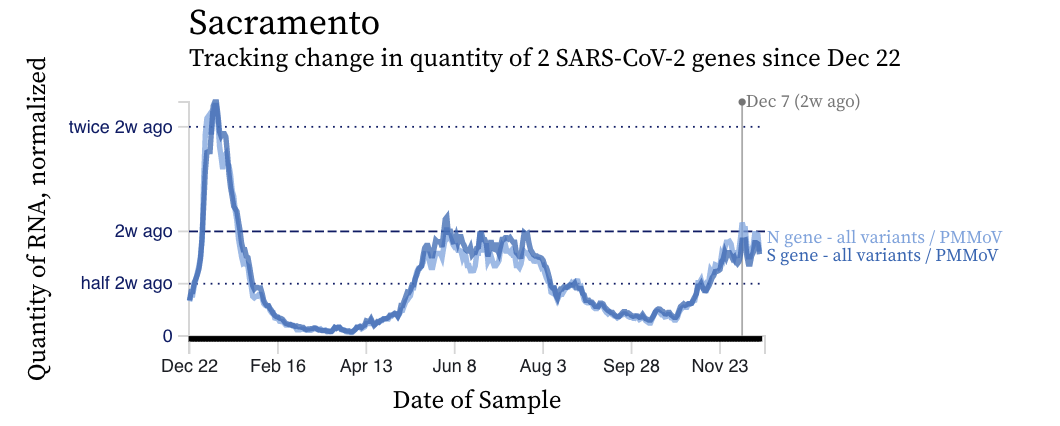
The HV69-70 mutation present in BA.5 and B.Q* sublineages is still present in the majority of circulating SARS-CoV-2 found in wastewater. You can see that in this chart from Silicon Valley Clean Water showing the HV69-70 mutation concentration (purple line) mostly following the blue lines (N and S gene concentrations).
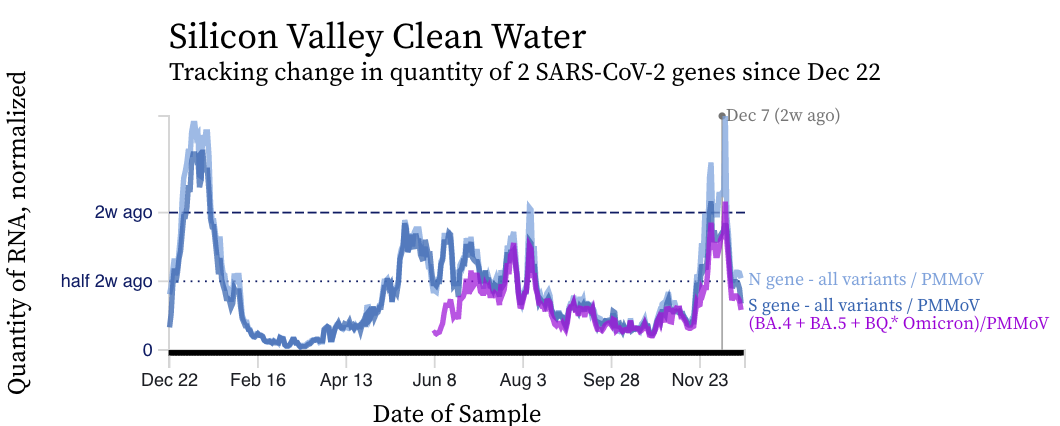
But as we have pointed out before, the ratio of HV69-70/N appears to be starting to decrease across the plants as shown in this chart of the HV69-70/N ratio over time at all the plants. If the ratio is at 100%, it suggests that all the SARS-CoV-2 genomes have the mutation. The grey symbols are from all the plants in SCAN (you can access the plot and play around with it here). The current regional ratio of HV69-70/N appears to be about 75%.

Assuming this is a real (and not some sort of, as of yet, unidentified artifact), it suggests 25% of circulating SARS-CoV-2 in wastewater does not have the HV69-70 mutation. XBB and BA.2.75 are among variants that do not have the mutation. The CDC variant tracker nowcast for our region (HHS region 9) predicts that nearly 25% of the circulating variants this week are those without this mutation (including XBB and BA.2.75). The sequencing data from wastewater samples from Sacramento, Oceanside, and San Jose between 12/5 and 12/10 suggest that while BQ.* sublineages dominate the wastewater samples, XBB and BA.2.75 are present in the samples and may be increasing. Therefore, the explanation for the decrease in the HV69-70/N ratio may be that there are now more XBB and BA.2.75 circulating.
IAV, IBV, RSV, HMPV
Influenza A (IAV) RNA concentrations have been dropping across the plants over the last week suggesting contributions from infected individuals into the wastewater is also declining. Example charts from Silicon Valley Clean Water and Sacramento are below.
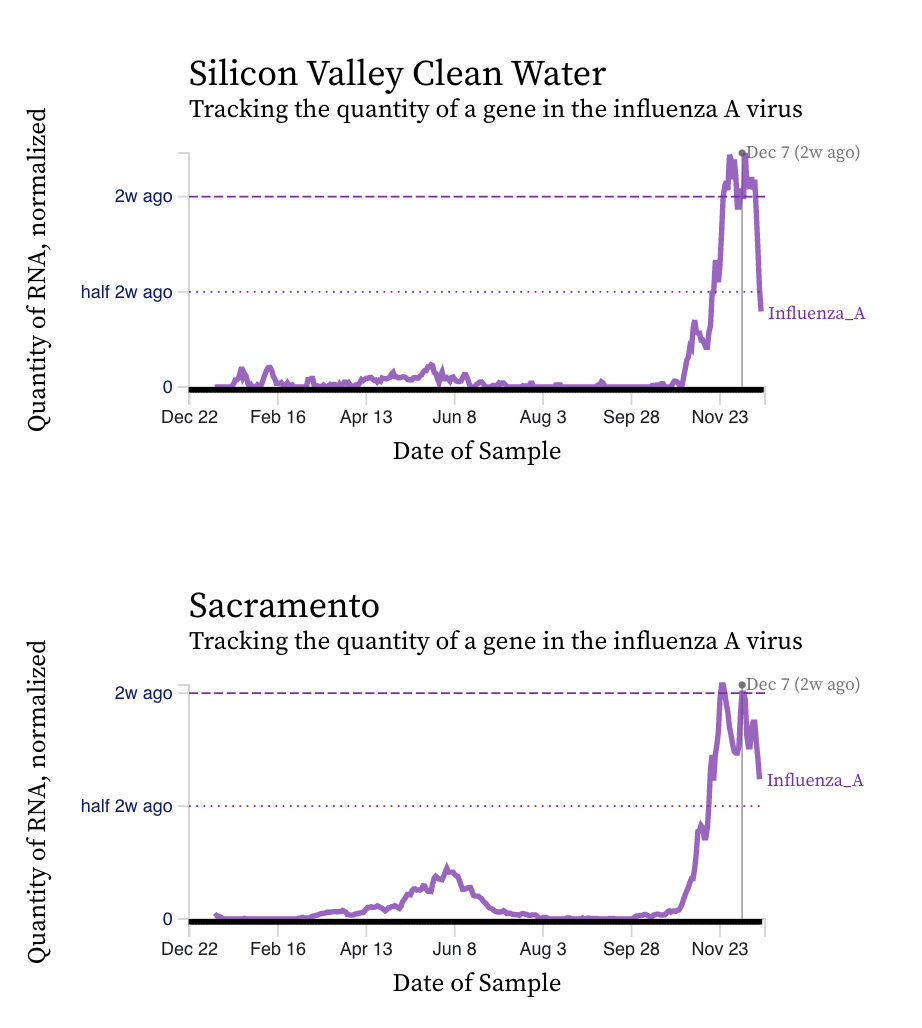
We look at the positivity rates across the State of California for influenza A from the CDPH website which are updated on a weekly basis (see chart below). It is hard to tell from the positivity rate data if there is a downward trend yet due to delays in test result reporting. The most recent data are for the week of 12/9/22.

RSV RNA concentrations are either approximately the same as they were two weeks ago (like Sacramento) or decreasing (Oceanside). None of the plants are showing increases over the last two weeks in RSV.
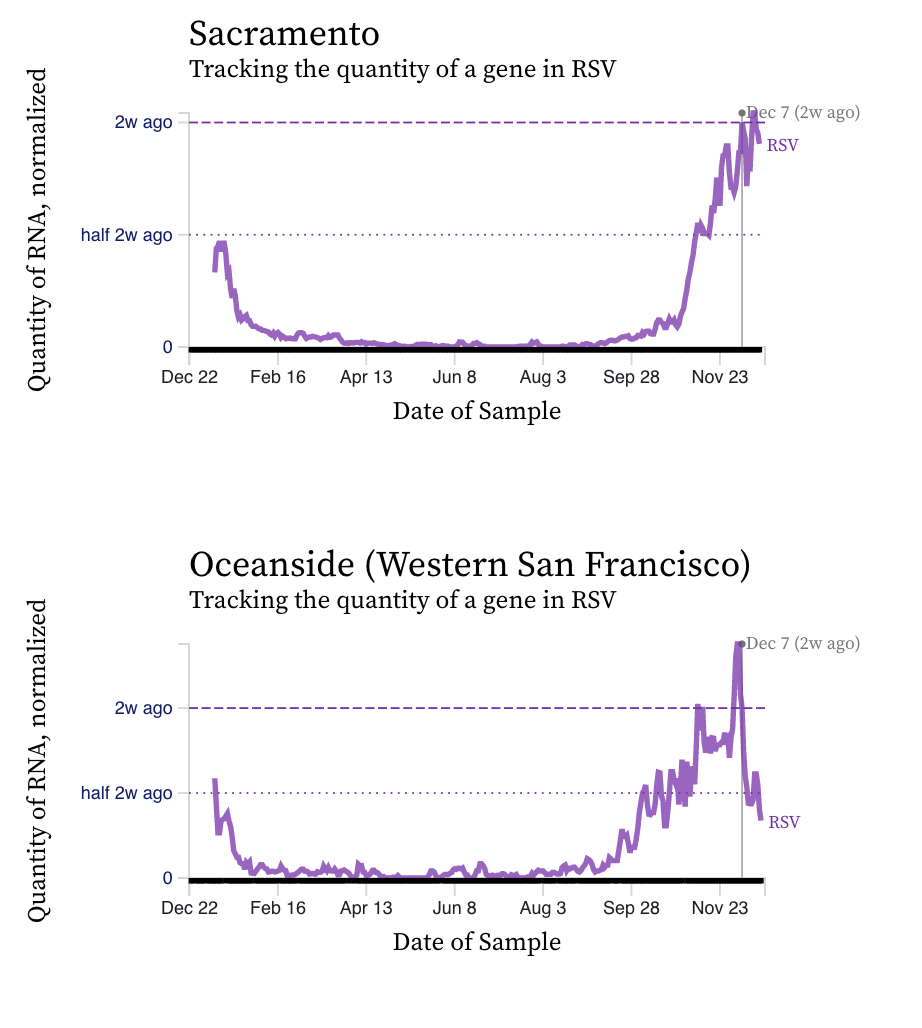
Here is a chart of the weekly RSV positivity rate data across the entire state of California from the CDPH website, also showing a recent decline in RSV case positivity. The most recent data are for the week of 12/9/22.

HMPV (human metapneumovirus) RNA concentrations have started to also decrease across the plants over the last 2 weeks. See example charts from Southeast and San Jose.

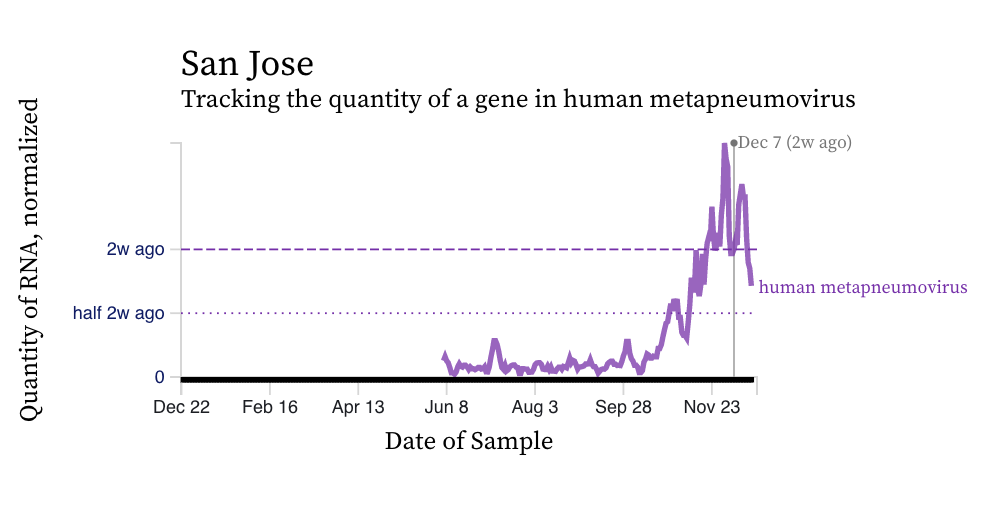
Influenza B (IBV) RNA concentrations are non-detect in most samples over the approximate 5 weeks we have been measuring it. We have detected it most frequently at Palo Alto (5 times), San Jose (5 times), and Sunnyvale (5 times), mostly at quite low concentrations (except the one measurement in San Jose). Example data from San Jose and Palo Alto are below from the drill down page (here).
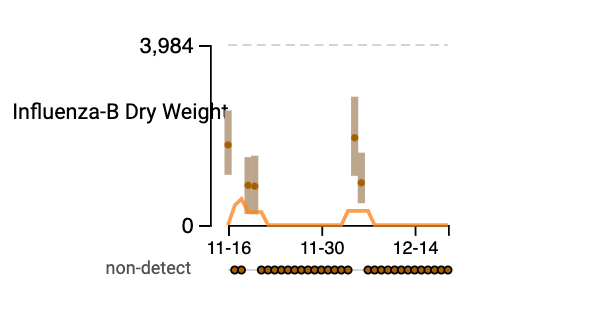
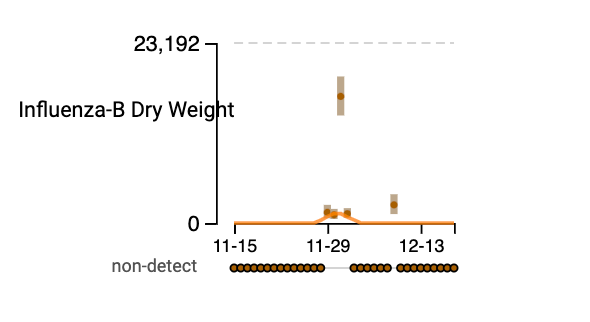
Norovirus RNA concentrations have been measured for about 5 weeks now at all the SCAN plants. We have observed concentrations between 10^4 cp/g and 10^8 cp/g. Data appear to be hovering near high levels; trends are mixed across plants. Here is an example from the drill down page for San Jose. The concentrations on the y-axis are on a linear scale and are in units of copies per gram dry weight.
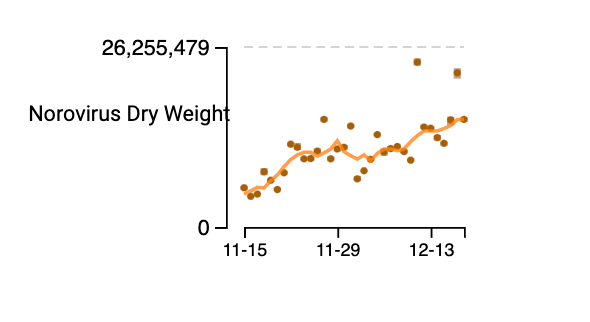
MPXV We are seeing mostly non-detects in the past weeks for MPXV DNA. The only exception is for Southeast where we still have detections, at low levels. Here are charts of the MPXV data from Oceanside and Southeast showing the 5-d trimmed averages over the last 6 months.

